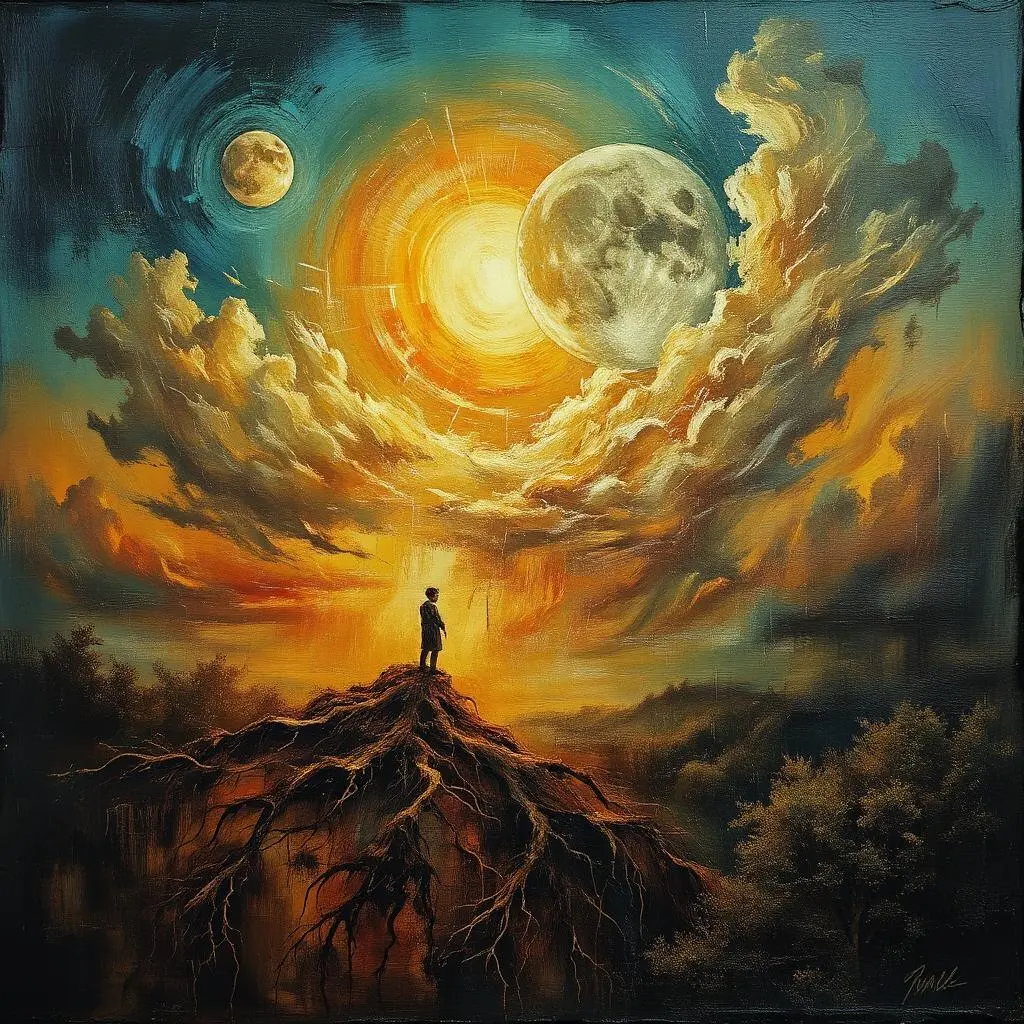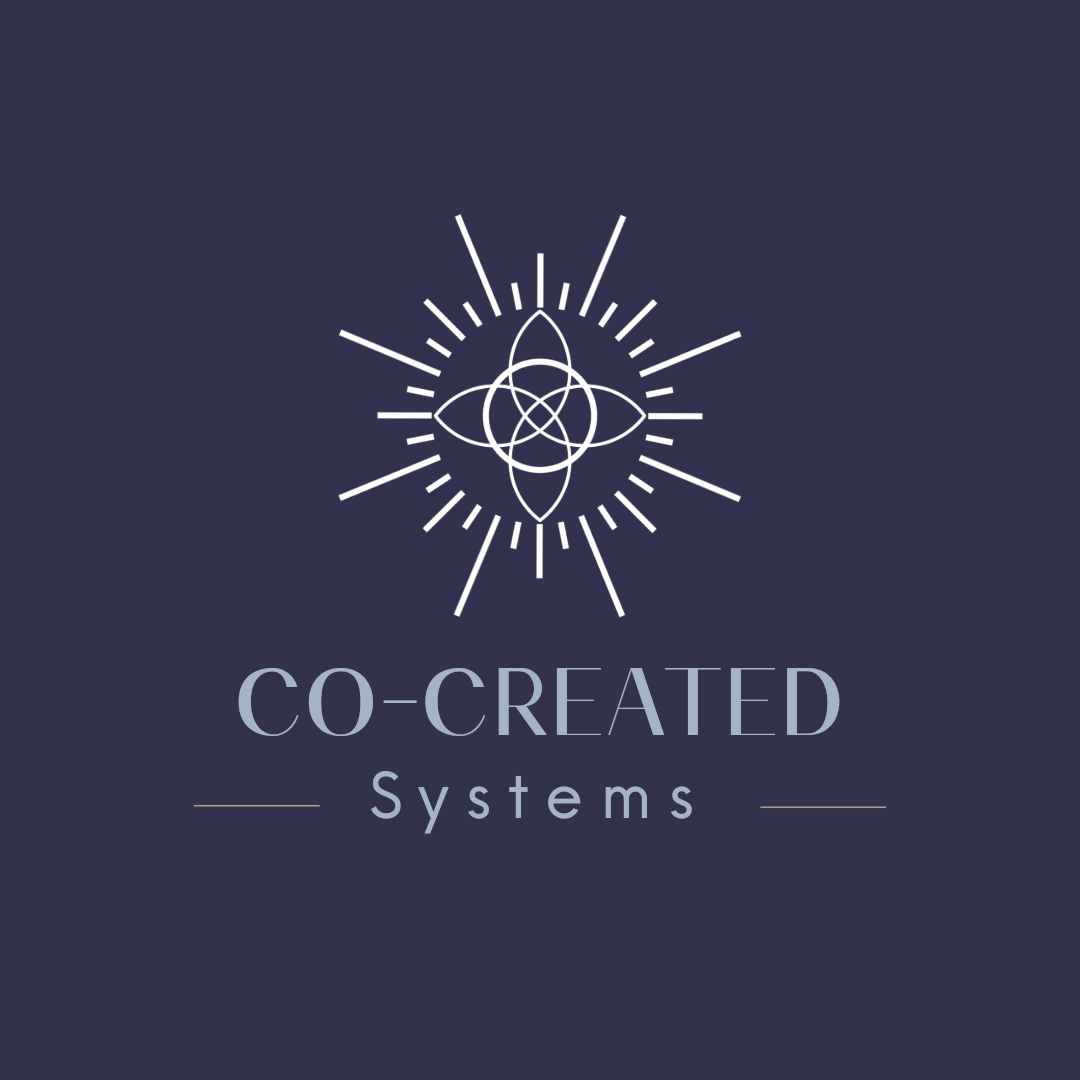
Domination System to Partnership Systems: Value-Based Social Imaginaries
Power Over to Power With
Extrinsic to Intrinsic
Control to Creativity
Isolation to Integration
Who do you think you are? The answer to this seemingly simple question shapes everything—how you move through the world, what you believe is possible, how you relate to others and to the living systems that sustain you. Yet most of us have never consciously examined the stories about selfhood and existence that we’ve inherited, stories that may be limiting our capacity to thrive in an interconnected world.
The dominant narrative tells us we are separate, bounded individuals competing for scarce resources in a mechanical universe. It suggests that our identities are fixed, that humans are fundamentally different from and superior to the rest of nature, and that the goal of existence is to transcend our earthly limitations. These aren’t just philosophical ideas—they’re lived assumptions that shape everything from our economic systems to our mental health practices to our relationship with the ecological crisis.
But what if the very notion of separate selfhood is an illusion that’s causing more harm than we realize? What if we are actually interdependent beings whose wellbeing is inseparable from the wellbeing of our communities and ecosystems? What if our identities are not fixed containers but fluid processes of becoming that emerge through relationship?
Beyond the Lone-Hero Myth: Oneness Identity
The story of the isolated individual—the self-made person who succeeds through personal effort alone—is one of the most powerful and destructive myths of our time. It obscures the countless relationships and systems that make any individual achievement possible, from the air we breathe to the communities that raised us to the accumulated knowledge we inherit.
Partnership ways of being recognize what Indigenous cultures have always known: that we exist within webs of relationship that extend far beyond our individual boundaries. We are not separate from the world but expressions of it. Our sense of self emerges not in isolation but through our connections with others—human and more-than-human alike. This understanding doesn’t diminish our individuality but places it in proper context. We remain unique expressions of life while recognizing that our uniqueness itself arises from and contributes to the larger patterns of which we are part.
From Scarcity Mindset to Planetary Consciousness
The scarcity mindset tells us we live in a world of fundamental lack—not enough resources, love, security, or meaning to go around. This creates a perpetual state of competition and anxiety, where we must accumulate and defend what we have against others who might take it away. But this mindset itself is perhaps the greatest scarcity of all—a poverty of imagination that prevents us from seeing the larger abundance within which we exist.
Planetary consciousness emerges when we recognize ourselves as expressions of Earth’s creativity and intelligence. From this perspective, we are not separate beings struggling for survival on a hostile planet but conscious participants in a living system of extraordinary generosity and resilience. The Earth doesn’t hoard—it circulates, regenerates, and creates conditions for ever-greater complexity and beauty.
This expanded awareness doesn’t deny real ecological limits or material constraints. Instead, it helps us distinguish between genuine boundaries that call for wisdom and creativity, and artificial scarcities created by systems that concentrate wealth and power. When we align with planetary rhythms of reciprocity and regeneration, we discover possibilities for flourishing that scarcity consciousness cannot even perceive.
Identity as Becoming Rather Than Being
We’ve been taught to think of identity as something we have rather than something we do—a fixed set of characteristics that define who we are across time and context. This static view of selfhood can become a prison, limiting our capacity for growth and adaptation.
The relational way of being defines identity as an ongoing process of becoming. We are not fixed entities but dynamic patterns that emerge through our relationships and choices moment by moment. This fluidity isn’t chaos—it’s the natural creativity of life itself, constantly generating new possibilities while maintaining continuity through time.
When we understand ourselves as processes rather than products, we become more resilient, more creative, and more capable of responding to changing circumstances. We can hold our current identity lightly while remaining open to who we might become.
Returning to Our Place in the Web of Life
Perhaps no aspect of domination consciousness has been more destructive than the belief that humans are separate from and superior to the rest of nature. This anthropocentric worldview has justified treating the Earth as a collection of resources to be exploited rather than a living community to which we belong.
We recognize humanity as participants in rather than masters of the community of life. We are not outside nature looking in but expressions of nature’s creativity and intelligence. Our wellbeing depends absolutely on the wellbeing of the ecosystems that sustain us, and their wellbeing is increasingly dependent on our choices. This biocentric perspective doesn’t diminish human importance but places it in harmoneous and nurturing relationship with all things. We have unique capacities and responsibilities as conscious beings capable of both tremendous creativity and tremendous destruction. The question becomes how to use these gifts in service of the larger web of life rather than at its expense.
Embodied Transcendence
Traditional spirituality often frames transcendence as escape from material existence—rising above the body, the Earth, the messy complexities of incarnate life. But what if the sacred is not found by leaving the world behind but by diving more deeply into it?
Partnership ways of being embrace what we might call embodied transcendence—finding the extraordinary within the ordinary, the infinite within the finite, the sacred within the material. Instead of seeking to escape our earthly existence, we learn to fully inhabit it, discovering that presence itself is a doorway to profound transformation. This doesn’t reject the mystical dimensions of existence but grounds them in lived experience. It recognizes that we are both human and divine, individual and universal, temporary and eternal—not despite our embodiment but through it.
Practicing New Ways of Being
Transforming our ways of being isn’t just a matter of changing our thoughts—it requires engaging our whole selves in new patterns of existence. This might mean practices that cultivate awareness of our interdependence, experiments in seeing ourselves as part of larger wholes, or simply moments of genuine presence that reveal the aliveness that connects all things. As we embody these new ways of being, we begin to live from a different center—one that recognizes our fundamental interconnection while honoring our unique gifts. We discover that when we align ourselves with the deeper patterns of life, we don’t lose our individuality but find it in its proper context, as part of a larger creativity that we can serve and that serves us in return.
Ways of Being: Lived Experiences
Explore the specific contrasts between domination and partnership approaches to selfhood and interconnectedness, along with practices and examples that embody new ways of being.
Watch, Read, Listen
No posts were found.
Join 900+ subscribers
Stay in the loop with everything you need to know.
